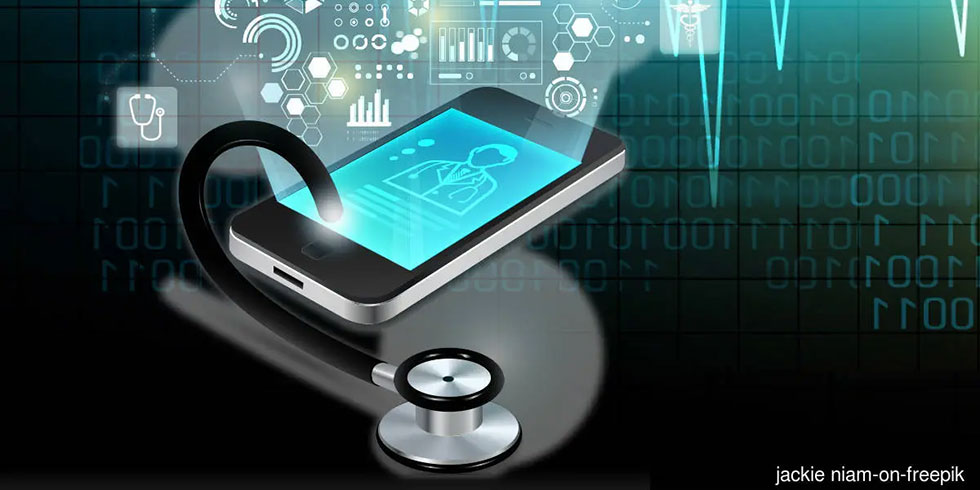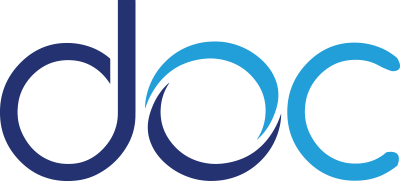Cover Story: Regulating The Online Healthcare Space

The integration of technology into healthcare has been a long time coming. But regulations that specifically govern online healthcare services (OHS) — which cover telemedicine, e-prescriptions and so on — do not exist yet in Malaysia.
The absence of such regulations could result in dire consequences. There could be bogus doctors who give online consultations, resulting in misdiagnosis; overprescription of drugs; or even patients who fake their identities to gain access to controlled drugs.
A group of doctors, entrepreneurs, regulators and academicians saw this coming eight years ago and began discussions on potential regulations and guidelines. This took the form of the Telemedicine Development Group in 2016, which became Digital Health Malaysia (DHM) in 2018. In 2020, the Ministry of Health (MoH) entrusted a consulting firm to gather input from stakeholders and produce a guideline for OHS.
One of the responses from that engagement was that industry players wanted a “sandbox” environment to work with the government and regulators.
Datuk Hishamshah Ibrahim (left), deputy director general of health (research & technical support) at MoH, with Futurise CEO Rosihan Zain
Then, the pandemic hit, and the need to come up with regulations to govern this space became even clearer. Patients were stuck at home and opted for virtual consultations with doctors and drug deliveries from pharmacies. Digital health start-ups saw their businesses grow significantly as traditional healthcare players also began dabbling in telemedicine.
Finally, in February this year, the MoH announced the launch of the OHS Regulatory Lab (OHS RegLab) with Futurise Sdn Bhd, a subsidiary under the Ministry of Finance. The OHS RegLab will allow its participants, who are OHS players, to operate in a live and controlled environment. The players will have the opportunity to evaluate the guidelines and provide feedback to MoH and the regulators.
“The OHS guidelines are from the perspective of regulators. We hope to improve them further through the RegLab and by collaborating with Futurise,” says Datuk Hishamshah Ibrahim, deputy director general of health at MoH.
Hishamshah’s hope is that in two years’ time, they will have an implementable guideline for OHS that has been agreed upon by the industry players, regulators and healthcare providers. It could be in the form of a standalone legislation or an amendment of existing regulations.
A few key things MoH will emphasise on include the safety and quality of the services, confidentiality and accountability, as well as traceability.
“For instance, if a robot gives medical advice, how accountable is it [for the consequences]? You must make sure the person behind the camera is a qualified healthcare professional and the other person is a bona fide patient,” says Hishamshah.
The OHS RegLab is currently finalising the selection of applicants for the first cohort, according to Futurise.
Generally, the OHS industry players that Digital Edge spoke to are glad that the RegLab is being introduced and hope that the resulting regulations can be implemented in time.
“We have participated in every single version of [these discussions]. We have come up with frameworks, guidelines, research and provided feedback. We are excited to be part of this. As a growing company, we look forward to the actual implementation for us to continue to make a difference in the ecosystem,” says Maran Virumandi, co-founder and managing director of DoctorOnCall, a telehealth provider.
“This initiative is on the right path with sufficient sponsorship from top officials, and we look forward to working with MoH.”
There must be a healthy budget set aside for the RegLab, he adds, to ensure that experts in all relevant sectors can work together. “You need some consultants with deep industry experience on cybersecurity for healthcare and data resiliency, for instance.”
The technology landscape changes rapidly, so a sandbox environment would be more effective than a top-down approach, say industry players.
“At the end of the day, we don’t want to kill innovation through regulations that are too tight. We also cannot keep it too loose because unlike spaces like banking or e-commerce, we are talking about the health and safety of patients here,” says Dr Raymond Choy, co-founder and CEO of DOC2US, an online consultation platform that connects patients to doctors.
There is a need to look at the technology platforms, medical devices and processes used in digital healthcare to ensure patient safety. Data privacy is also a huge issue. For instance, can a doctor record the video of an online consultation? If so, where is the data stored and who can access it?
“Let’s say there is a technology problem halfway through your consultation and the patient collapses. Who is liable for that? Is it the physician, the platform or the technology provider? This is a very grey area. Right now, telemedicine players are self-regulating,” says Choy.
This is something echoed by Dr Raj Kumar S Maharajah, president of the Medical Practitioners Coalition Association of Malaysia.
“Digital health is here to stay. Though there has been talk about this for nearly two decades, this has been accelerated in the past two years due to the pandemic. Practitioners and clients are unsure of the dos and don’ts. There aren’t proper guidelines yet for doctors and patients. With this new innovation, old laws probably need to be re-addressed and appropriate amendments made,” he says.
What needs to be addressed in the RegLab?
When Maran co-founded DoctorOnCall in 2016, he commissioned a legal firm to look into the regulatory landscape for digital health. One of the key findings was that there wasn’t a targeted regulation for it, whether it was for data privacy, telehealth, patient health records, medication delivery or online pharmacies.
So, he went ahead and took the self-regulation approach by creating protocols to ensure patient safety and doctors’ indemnity. Choy did the same with DOC2US. He benchmarked its practices on Singapore’s and India’s telemedicine guidelines, which he finds to be the most comprehensive.
That’s not to say that OHS is completely unregulated, of course. The Medical Act 1971 (amended in 2012) regulates the registration and practice of medical practitioners, who are also bound by the Malaysian Medical Council’s Code of Professional Conduct. Medical devices are governed by the Medical Device Authority. The Poisons Act 1952 regulates the sale of medicines.
But there are no enforced regulations that clearly outline the conditions that can or cannot be treated through telemedicine or the steps that doctors must follow in OHS, for instance.
A manual or clinical practice guideline for doctors in telemedicine is needed, the interviewees say. There must also be a clear understanding of the limitations of telemedicine, Choy emphasises.
“Let’s say a patient calls in with severe stomach pain on the lower right side. I cannot say if this is appendicitis before I examine the patient or administer a blood test or scan. What telemedicine can do in this case is, based on the symptoms the patient tells me about, I tell him it is likely appendicitis but that he should go to the emergency department immediately to get checked.”
However, if a patient complains of itchy rashes, he can describe the condition and show his skin onscreen to the doctor. “The doctor can know that this is eczema or an allergic reaction. It’s not life threatening, so the doctor can prescribe a cream that will arrive at the patient’s doorstep in a few hours.”
There must also be regulations or requirements put in place to prevent e-prescriptions from being misused. For instance, a patient could use an e-prescription and refill the drugs multiple times from different pharmacies if there is no monitoring of the ecosystem.
DOC2US tackled this by introducing an e-prescription system that requires digital signatures. Choy says it complies with requirements by the National Pharmaceutical Regulatory Agency.
“Once [the medicine is dispensed to you], our whole network [of pharmacies] will know. None of the pharmacies can dispense [the drug] to you anymore. The e-prescription has to be signed digitally so we can track and trace what is going on,” he says.
“If there is no law, players might choose not to adopt this because nobody will penalise them. We stepped up to become the benchmark for the market in this because it’s the right way to do it.”
Medical devices, meanwhile, must be strictly regulated and monitored. The use of Internet of Things-connected devices to monitor patients’ conditions remotely will become more commonplace with OHS. A faulty device that gives false data can be very harmful.
Then there is the tricky matter of the management and storage of patient data. There are concerns over data being stored in servers outside of Malaysia. Additionally, patients’ consent has to be given if the virtual consultation is recorded, and the electronic medical record has to be governed by strong privacy policies. Patients must know who has access to the data and for what purpose, industry players say.
On this point, Dr Prathaban Raju, medical director of CareValet, emphasises the need for creating a safe and fair ecosystem in OHS. This is not just to strike a balance with the regulations that traditional healthcare players have to abide by currently, but also to prevent monopoly of services.
He brings up the use of the MySejahtera app for Covid-19 as an example. Earlier this year, the security of data in MySejahtera was questioned following confusion over who owns the app. The app was developed by a private company, but MoH said that it is now fully owned by the government.
“The few vendors that were selected to plug into the new super app then went on to develop oligopolies, as only a few OHS companies were well-positioned enough to become vendors for testing, vaccinations or even tele-consultations,” says Prathaban.
What about verifying the identity of the doctors and patients? The OHS platforms use technologies like facial recognition. Some collect identity card numbers to ensure the patients are not creating multiple accounts. Again, some kind of standardisation in methods is required to protect all parties.
Another area that Maran believes should be addressed is in the dissemination of information. The Medicines (Advertisement and Sale) Act 1956 prohibits advertisement of certain medical matters. For instance, there cannot be advertisements about the medicines and treatments to address specific ailments and the list of services a doctor can perform, he says.
This poses difficulties for OHS, says Maran, since it uses its online platform to educate patients, but it could be interpreted as an advertisement. “The most popular questions being asked on our platform are about birth control, sexual health, diabetes and migraines. But we can’t say that medication A is for treating headaches,” says Maran.
That is why there is no local version of health and medical websites WebMD or Healthline, he adds. This does a disservice to patients, because search results for diabetes in Malay, for instance, will lead patients to websites touting untested treatments. “You have a whole bunch of fly-by-night operators promoting magic pills and such,” Maran says.
What can or cannot be treated through OHS?
In 2020, the Malaysian Medical Council (MMC) issued an advisory on virtual consultations. Among its suggestions were for doctors to only have virtual consultations with existing patients, unless there is a special circumstance, like the pandemic.
Outside of the MMC, there have also been suggestions that certain medications should not be prescribed through telemedicine.
The OHS industry players mostly agree with the latter. Class A drugs, for instance, should not be prescribed by OHS virtually. Choy says DOC2US has a stringent prescribing policy for antibiotics and it provides an alternative to cough syrup, which can cause addiction.
But they disagree that OHS can only see doctors’ existing patients. This defeats the purpose of OHS enabling wider access to healthcare, they say. Many low-risk cases can be handled by OHS, whose doctors can refer the patients to a physical clinic, if needed.
“We may have patients who are not in KL and want to speak to a paediatric dermatologist here, but it’s not convenient for them to come. Or a patient might want a second opinion. A new patient can do a blood test wherever he is, upload the results, and the doctor can walk him through the results virtually,” says Hazwan Najib, co-founder and chief marketing officer of DoctorOnCall.
Currently, OHS players work with insurers and corporates, connecting their customers and employees to their network of pharmacies. The customers and employees can get their prescriptions filled online and sent to their doorstep, and arrange for virtual consultation with the doctors.
There is also continuity of care in OHS, the players say. Traditionally, some patients have to queue for hours in the hospital, only to see the doctor for a few minutes and are then left alone for weeks before the next check-up. In contrast, OHS patients can regularly communicate with the doctors via the app to get advice.
“We could coach patients on how to control their sugar intake and recommend devices for them to read their blood sugar levels. When they test their blood sugar levels, the data syncs up directly with my database in the clinic and I can communicate with them,” says Prathaban.
Of course, one of the big limitations of OHS is that it requires access to devices and connectivity.
“It’s very challenging for the B40, elderly and rural communities without infrastructure. We will need a lot of help from not just OHS players, but also the government. Can we build a kiosk [connected to the internet in rural areas] or arrange for drones to deliver things? Can we use SMS to educate the elderly patients?” says Choy.
The kiosk is something that DoctorOnCall has been experimenting with in the form of a DocPod. The company was inspired by what healthtech company Ping An Good Doctor was doing in China. The company has One-Minute Clinics in various locations, where patients enter a small room to connect with a virtual artificial intelligence-powered “doctor” to obtain a preliminary diagnosis.
“I think this is the way to go to bridge the online and offline gap. People can go to the booth and measure their blood glucose levels, for instance. But post-Covid, people are worried about being in a confined space that has high traffic,” says Hazwan.










